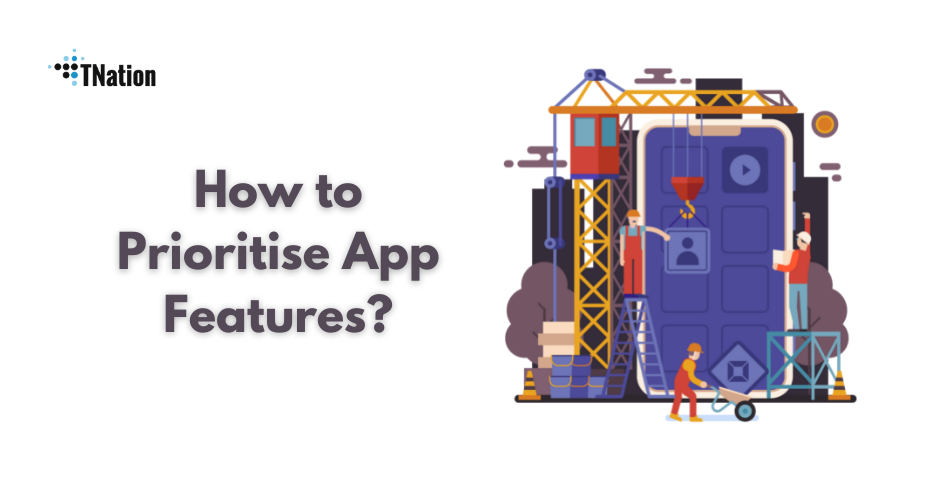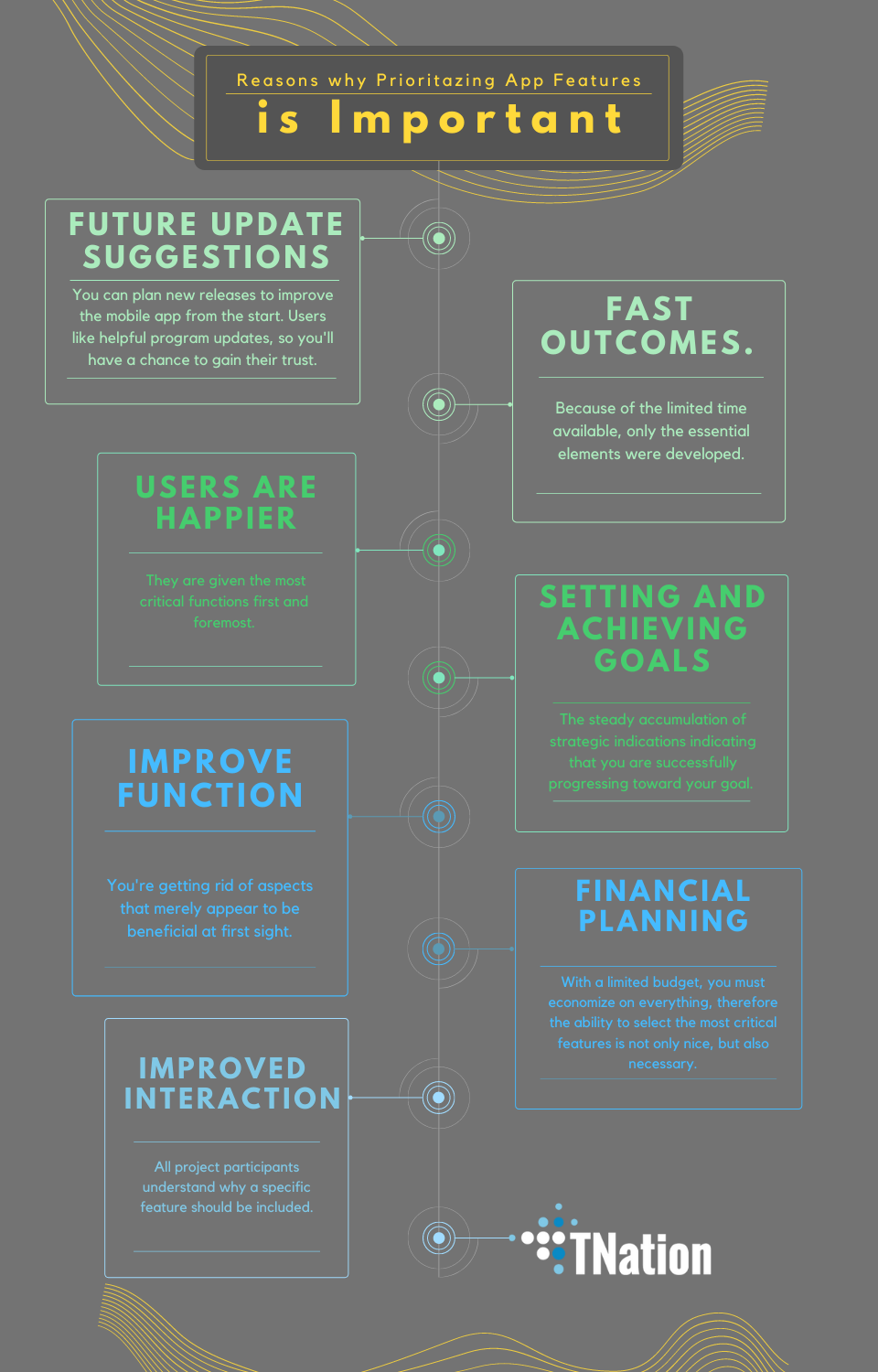You had an idea for a mobile app for your company. You scribble down the design, the look, and the feel of it. You even have a clear picture of how it works. However, when transferring your project to an outsourcing company, there are too many features, and prices are building up.
How do you prioritise custom app features? How do you decide which ones to leave out of the first version and which ones to keep? That is a difficult question, and it might be daunting for the idea maker. However, it appears that eliminating one will render the other meaningless. The truth is that, just like in art, you must be able to discern which elements are excess and which should be kept in the painting.
TNation is a software development company that works closely with clients. As a result, choosing a feature for the development stage is usually tricky. Still, we provide some less formal ways to prioritise your app’s features and make sense of it from a business and usability standpoint.
Start Prioritising App Features from the Beginning
The most challenging moment in business is when one has to decide to give up on some of the app features, at least in the first version of the custom application. After that, it becomes increasingly personal, especially if every feature approach or idea comes from someone’s hard work. In addition, it could be an entire army of stakeholders behind your back putting additional pressure.
However, it is not personal when you look at it differently. In the end, all the features and the application itself accommodate a business need. Therefore, deciding on what goes and what doesn’t is like making the best decision for the successful future of your mobile app and company development.
#1 – Prioritise Features by Category.
You know it’s a mess when there is no organisation. So you might want to prioritise app features by themes or categories. That makes you focus on the most critical aspects of your initial app. In other words, you are deciding where to focus your efforts. For example, what is the most crucial element of your custom mobile app? Is it communication? It’s the same with dividing the app features into themes. After placing them in the same group, you can visually see where your focus should be.
#2 – Divide and Conquer Features
Now that categories are arranged, you can further divide them by practicality, desirability, viability.
That means that practicality can be crucial when selecting a suitable feature. You can get solid advice on all technical aspects of the component by speaking to the software development team. They can offer a solution that will be the best for the success of your project even in the future.
Users are the ones that have a say in the project. Otherwise, the application will not have much success on the market. For example, desirability can lead you to find whether or not your audience is using this feature or, better yet will it make a difference.
Practicality is one of the essential aspects of any mobile app development, and it can include many factors like finance, legal aspects, and goals. Hence, it is crucial to speak to the in-house team. All of this can help you generate an objective view of your new custom app and guide you to the best choice.
#3 – Priority of Custom App Features by its Score
If you have many stakeholders on the app, this method might be the best one to choose. For example, let them describe the app’s features and their value to the final application and business. In the end, it comes down to weighing the advantages and disadvantages of the particular element in percentage. When you have a percentage number, it’s easy to decide what feature you can leave out and implement it later.
Why do you need to Prioritise the Features of Your Custom App?
Like in most work, it’s not just the costs that the team should consider. However, the budget is always a number one priority. There are a lot of factors that can influence the outcome and performance of the custom app on the market.
Every developer or software engineer will tell you that sometimes less is more. Overcrowding the application with unnecessary features can negatively affect the mobile app’s performance in the long run. In addition, remember why you are creating the custom app in the first place? It’s all about the users in the end. It may seem like a neverending circle, but there is no benefit for your business without the users. Therefore, you can see that Google has emphasised the importance of user experience. Why? Not just for SEO purposes but for business in general.
Over the past several years, we have noticed that the users have become increasingly tech-savvy. Therefore their expectations and requirements have changed drastically over time. Therefore, if an app does not solve a problem or satisfy their needs in any way, there is a likely chance they will press that uninstall button as quickly as they downloaded the app.
Think of it this way: an essential feature for users is vital for your business. So, whichever method you choose, and we have named just a few, is a sure way to help you reach your goal – a successful mobile app.


